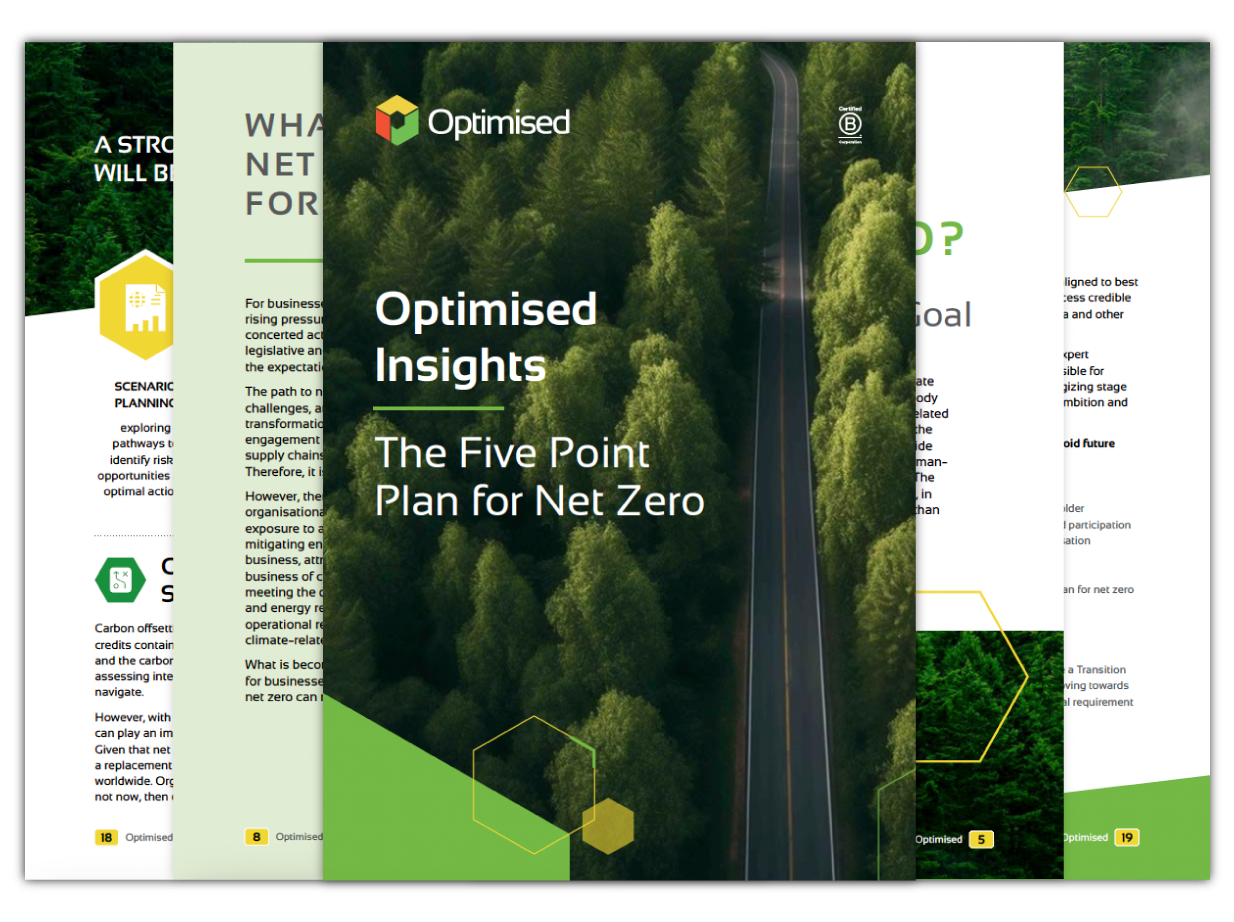SBTi Net-Zero Standard Version 2.0: Impending Changes for Companies
The Science Based Targets initiative (SBTi) is currently in the process of updating its Corporate Net-Zero Standard. The updated framework is set to replace the current version by 2027.

Although, there is still a second pilot phase to go and some items still under discussion, there is an increasingly clear view of future expectations for companies and some substantive changes to how businesses set net zero targets and report on progress moving forward.
Here we outline the major changes and their implications both for businesses with existing targets, as well as those looking to set SBTi aligned Net Zero targets in future.
Why is the SBTi Net-Zero Standard changing?
With these latest evolutions the SBTi is attempting to balance ambition with pragmatism, considering challenges for companies such as data collection, Scope 3 tracing and removals availability. The changes are also aimed at increasing integrity meaning a rising bar of requirements, particularly for larger businesses.
The objective is to develop a practical and robust Standard that works for businesses and accelerates climate action[1].
What are the headline changes to be aware of?
The new draft Standard includes a lot of detail and various proposed changes. It is important to remember that this is a draft and still subject to incorporation of feedback from the recent consultation and subsequent pilot phases. However, this is a summary of the major updates and the potential implications.
Company Categorisation
The Standard now distinguishes between two categories of company. Larger corporates in high-income regions (“Category A”) will face the most ambitious criteria, while SMEs and firms in lower-income regions (“Category B”) may see adjusted requirements and more flexibility to remove barriers to target setting.
For example, Category B companies will only be required to set near-term targets, rather than near- and long-term targets. Scope 3 targets, neutralisation of residual value chain emissions and third-party assurance of measurement and reporting may also be optional for these companies. This is designed to remove the barriers to entry for these smaller firms, with less available resources.
Mandatory Transition Plans for Large Companies
Category A companies will no longer be able to set near-term targets without also setting a net zero target. It is also proposed that these companies be required to publish a climate transition plan after SBTi validation.
It is anticipated that transition planning will become a legal requirement for large enterprises in many jurisdictions within the coming decade with or without the SBTi, however this is another reason to ensure preparedness.
A new validation model
Shifting from ambition to measurable progress is a core objective of the new Standard, and it intends to achieve this by introducing a new assessment and communication of progress requirement. A new validation model will broaden the SBTi’s oversight from just target-setting to include target implementation. There are several changes as part of this which aim to address the assessment of progress and the claims that can be made by corporates.
This tightens up the SBTi governance and checking of targets and is likely to have implications for data, measurement and reporting requirements for businesses.
Separate Scope 1 and 2 targets
Companies will no longer be able to aggregate direct and energy-related emissions, with separate targets required for Scope 1 and 2. This is designed to prevent operational emissions being overlooked due to progress on purchased electricity.
Companies will therefore need clearer strategies for direct emissions and energy procurement. There will be updated guidelines on target-setting for Scope 1 & 2 emissions.
Deeper Scope 3 accountability
Scope 3 is often the biggest barrier to setting targets, with traceability a considerable issue. There are three major updates on Scope 3:
- Target boundaries have been updated. This is no longer based on the current arbitrary 67% blanket threshold, rather a company-specific, relevance approach.
- More options for target setting. Greater emphasis has been placed on alignment target setting metrics in place of absolute reductions measurement to provide greater flexibility on available methods to tackle Scope 3 emissions. For example, this could be the proportion of net-zero aligned suppliers and activities.
- Introduction of “Indirect mitigation” measures. While direct mitigation is still the priority, when traceability is not possible, the new Standard proposes “activity pool mitigation” and “indirect mitigation” as acceptable interim alternatives, but will expect to see progress over time towards direct mitigation. For example, this could be aggregating emissions into an “activity pool” (e.g supply shed for a specific resource) or use of “book-and-claim” purchasing.
Data Quality & Assurance
Third Party Assurance will become a requirement, but likely only for Category A companies, in order to enhance accountability and integrity. Companies can anticipate a requirement for full traceability of emissions sources by 2035 for emissions intensive activities and 2050 for other emissions sources.
This means more rigorous data requirements and processes which organisations will need to be prepared for.
Beyond Value Chain Mitigation (BVCM) & Carbon Removals
The Standard maintains that BVCM or offsetting measures do not count towards mitigation goals. However, it does suggest mechanisms for formal recognition of companies purchasing carbon credits.
The Standard is currently assessing three possible approaches to deal with residual emissions. Clarity on this will emerge later but it looks likely that interim removal targets will be included to mitigate the risk of high demand and low supply as target dates approach.
This indicates that it will be important to have a strategy in place for removals as well as BVCM.
How to prepare for the Net-Zero Standard V2.0
The impending changes should not be seen as a reason to delay setting SBTi-aligned targets. In fact, this may be a riskier strategy. Organisations that wait until 2027 will face a steep compliance curve, higher costs for removals, and reputational risk from investors and customers who expect credible net zero plans. Targets set using the current Standard will still be valid until 2030 and now might be the time to take advantage of the closing window to set targets against the existing Standard and spread the workload over time.
Having said that, preparedness and even early alignment with the new Standard could secure first mover advantages such as stronger stakeholder confidence, better access to green capital, and resilience against regulatory and market shocks.
For smaller companies, the proposed differentiation in the new SBTi Net-Zero Standard lowers some of the barriers to entry, making it easier to set credible targets without the same resource intensity as larger peers — meaning now is the ideal moment to reassess alignment and gain the reputational and commercial benefits.
Below is a brief outline of the potential actions and strategies for future SBTi preparedness:
1. Assess and Strengthen Data Infrastructure
- Scope 3 emissions (value chain) will become even more material. Companies should invest in data upstream (suppliers, procurement) to ensure accurate reporting.
- Build systems for tracking not just reductions but also removal targets, durability, residual emissions.
2. Revise Strategy Around Scope 1 & 2
- Because Scope 1 and Scope 2 are being separated, with more demanding targets especially for Scope 2 (market-based / zero carbon approaches), corporates will need clearer strategies for direct emissions and energy procurement.
- Explore renewables procurement, contracts, on-site generation, power purchase agreements etc.
3. Plan for Carbon Removals
- The new emphasis on removals mean companies can’t leave removals off until very late. They’ll need to engage with removal technologies / nature-based solutions earlier.
- Understanding what qualifies, what permanence/durability means, and what costs are involved is going to be important.
4. Supplier Engagement and Value Chain Leadership
- Corporates will need to reach out to suppliers (especially Tier 1 and emission-intensive value chain actors) to align on net-zero pathways; this may include helping suppliers set their own targets.
- Procurement decisions, supplier selection, sourcing policies will matter more.
5. Enhanced Transparency & Governance
- Formal climate transition plans will need to be produced (if not already). Board(s), executive level visibility, internal and external disclosure will become more stringent.
- Assurance or verification of emissions data may become required / expected; spot audits may happen. Companies should anticipate third-party verification or other quality checks.
6. Differentiation Based on Company Type
- If your company is “Category A” under the V2.0 system (large / high-income geography), prepare for full criteria; if “Category B”, there may be some relief but still some accountability.
- Smaller companies or those in less developed markets may need support or plan capacity building / partnerships.
7. Timing & Transition Planning
- Companies setting new targets in 2025-2026 can still use the current standard, but these targets will be valid only until their expiry or end-2030. From 2027, new targets must satisfy V2.0.
- Gap analysis: compare current strategy vs draft V2.0 requirements to identify where work is needed (e.g. scope 3 suppliers, removal projects, verification).
8. Communicating Credibly
- With more emphasis on claims, progress and transparency, companies will face more scrutiny (investors, regulators, public). Misalignment or vague / non-credible claims will risk reputational and possibly financial costs.
The SBTi is expected to finalise and publish the standard after further revision and pilot testing in 2026, ahead of full adoption. We will keep you abreast of final updates. To understand the finer detail and how the new Standard might impact your business, our Net Zero Solutions team is here to support. Feel free to contact us.
[1] https://sciencebasedtargets.org/developing-the-net-zero-standard
Optimised Insights: The Five Point Plan for Net Zero
How to lead your organisation through a five-stage decarbonisation journey
In a world of rising regulation, investor pressure and climate risk, organisations can no longer afford to delay on decarbonisation. But the path to net zero is complex — and every business’s journey is unique.
That’s why we’ve created The Five Point Plan for Net Zero, part of our Optimised Insights series. This free guide outlines our five-stage framework to help your business move from carbon ambition to confident action.

Article by Carla Wilson
Head of Consulting, Net Zero
Our vision to optimise the world’s transition to net zero and beyond is only possible if we achieve carbon savings and return on investment for our clients. Carla’s consulting team is responsible for initiating this journey for our clients through net zero advisory, reporting and energy transition services.
BOOK YOUR 30-MINUTE ENERGY MANAGEMENT CONSULTATION
Fill in your details below to arrange a complimentary consultation with one of our experts. They will give you bespoke advice to help your business achieve all its energy needs, reducing cost, consumption and carbon.










